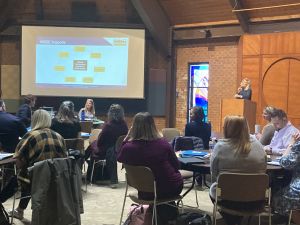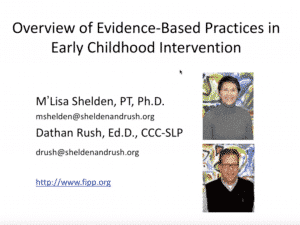Developmental Milestones

There are a wide range of behaviors that can be considered “normal” in terms of reaching certain developmental milestones. Knowing what to expect from babies, toddlers, and preschoolers can help families know what to look for and what to do to help their children. “Early learning guidelines can be a valuable part of a comprehensive high quality system of services for young children, contributing to young children’s educational experiences and to their future success.” (NAECS/SDE, November 2002). These resources may help families better understand their children’s development.
What do children need to know and be able to do, to be successful in school? Find out in this publication, including its appendix, Maryland Early Learning Standards Birth to 8 Years*.
The Centers for Disease Control and Prevention National Center on Birth Defects and Developmental Disabilities has a variety of resources and materials to help parents track their children’s development. Explore these resources to learn more:
Learn the Signs. Act Early. includes free and family friendly resources for tracking child development.
Milestone Moments* – A 42-page booklet with milestone checklists and tips to help parents support their child’s development from age 2 months to 5 years. Guidance about what to do if developmental concerns arise is also included.
Track Your Child’s Developmental Milestones* – Published as part of the CDC’s “Learn the Signs, Act Early” program, includes a checklist of key milestones from 6 months to 4 years and a message for parents about the tracking their child’s milestones and what to do if developmental concerns arise.
Siga de Cerca los Indicadores del Desarrollo de Su Niño*
The National Center for Infants, Toddlers, and Families Zero to Three website provides Developmental Milestones from birth to age 3 and offers parents “at-a-glance” information on nurturing your child’s development.
Modeled after the national Center on the Social and Emotional Foundations for Early Learning, Maryland’s SEFEL focuses on the social emotional development and school readiness of young children birth to age 5. This site includes links to resources housed on the national center website, such as Understanding Your Child’s Behavior: Reading Your Child’s Cues from Birth to Age Two*. This resource helps parents better understand their children’s behavior cues and ways to respond that support healthy social and communication development.
Columbia University’s National Center for Children in Poverty dedicates it work to the economic security, health, and well-being of America’s low-income families and children. Their online tool, Young Child Risk Calculator, shows users how many children under age six in each state are experiencing serious risks to their development. The tool allows users to select from three age groups: 0-3, 3-5, and 0-6, as well as three economic and various other risk factors known to affect children’s development.
* This pdf is not 100% accessible and is not a required resource.








